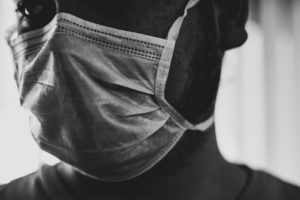I have been inspired by the blogs, social media posts, and graphics that hashtag “In This Together.” They are messages of hope during an unprecedented global pandemic. I have even created and shared some posts using #InThisTogether on my personal Facebook page and ones I help manage. Having a sense of unity has consoled me during uncertainty and times of grief.
#InThisTogether
If the virus hadn’t interrupted plans, I would be facilitating programs that pertain to health equity. In Marion County, where I work, the per capita income is just over $40,000. Families suffer housing insecurity and lack of access to healthy food. Black children are 4x more likely to experience poverty compared to t heir white peers (71% and 22% respectively). Similar trends are felt across the country. “African Americans are more likely to earn lower wages, be in careers that cannot be done remotely, and have fewer financial resources to draw on in the event of health problems or economic disruption”. Although the coronavirus does not discriminate by race or class, these inequities may mean that our community’s responses to COVID-19 will not be felt equally.
heir white peers (71% and 22% respectively). Similar trends are felt across the country. “African Americans are more likely to earn lower wages, be in careers that cannot be done remotely, and have fewer financial resources to draw on in the event of health problems or economic disruption”. Although the coronavirus does not discriminate by race or class, these inequities may mean that our community’s responses to COVID-19 will not be felt equally.
Recent reports show the percentage of Black people dying of COVID-19 is much greater than the percentage of Black people in the population.
Stats
- In Chicago, African Americans account for 72 percent of virus-related fatalities, even though they make up less than a third of the population.
- African Americans represent 40 percent of deaths in Michigan, even though they make up 14 percent of the state.
- In Louisiana, about 70 percent of the people who have died are Black, though only a third of the state’s population is.
- In Ohio, 18 percent of COVID-19 cases were Black patients. Director Amy Acton said her agency is sharing the data though there’s a problem. “25% of the cases that are being recorded in our database do not have race noted. A full 39% do not have ethnicity.”
In his 1967 book, Dr. Martin Luther King Jr. asked, “Where do we go from here? Are we going to choose chaos or community?” He further elaborates on racial and economic equality. During this time of utter crisis, we can draw on African and African American wisdom to reimagine ways our communities can come together. The Kirwan Institute for the Study of Race and Ethnicity at The Ohio State University outline specific policy recommendations(PDF). Inclusive systems, emerging leaders, and new narratives can expand our circle of human concern. In the meantime some will ask, “What can I do as an individual?”
To get started, acknowledge feelings you may have about race and racism in the United States. Explore how it might relate to the virus. Celebrate your maturity and growth and ability to explore a difficult topic. As you grow this skill, bring it to others. Engage in group dialogue and participate in collective reflection. Hold organizations accountable to specific goals by race and ethnicity, work toward closings gaps, and encourage your office to assess its policies and initiatives to support diversity, equity, and inclusion. Though “the arc of the moral universe is long, it bends toward justice.” To request more information or learn more about the Rapid Response Team on Civil Discourse on Race Relations, email gherman.12@osu.edu.
I use “Black” and “African American” interchangeably. I chose to capitalize “Black” in order to reflect that we are discussing a group of people and to be consistent with the capitalization of “African American.”

